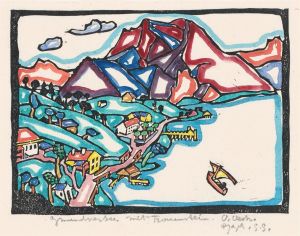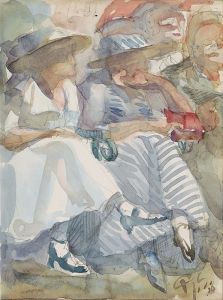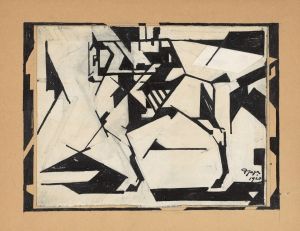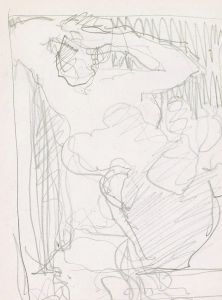
Anatomische studie van de been- en armspieren van een man in silhouet
A hand-painted replica of Reijer Stolk’s masterpiece Anatomische studie van de been- en armspieren van een man in silhouet, meticulously crafted by professional artists to capture the true essence of the original. Each piece is created with museum-quality canvas and rare mineral pigments, carefully painted by experienced artists with delicate brushstrokes and rich, layered colors to perfectly recreate the texture of the original artwork. Unlike machine-printed reproductions, this hand-painted version brings the painting to life, infused with the artist’s emotions and skill in every stroke. Whether for personal collection or home decoration, it instantly elevates the artistic atmosphere of any space.
Reijer Stolk (1896–1945) was a Dutch artist known for his contributions to graphic design, book illustration, and anatomical studies. One of his notable works, Anatomische studie van de been- en armspieren van een man in silhouet (translated as Anatomical Study of the Leg and Arm Muscles of a Man in Silhouette), reflects his interest in anatomy and precision. This artwork is a detailed study of the human musculature, focusing on the leg and arm muscles, presented in a silhouette format. The piece demonstrates Stolk's meticulous attention to anatomical accuracy and his ability to convey complex structures in a visually striking manner.
The artwork is part of Stolk's broader exploration of anatomy, which was a common subject for artists during his time. Anatomical studies were often created for educational purposes or as exercises in understanding the human form. Stolk's approach, however, stands out for its use of silhouette, which simplifies the depiction while retaining the essential details of muscle structure. This technique allows viewers to focus on the interplay of form and function without the distraction of surface details.
Reijer Stolk's career was cut short during World War II, as he passed away in 1945. Despite his relatively brief life, his works remain significant in the context of Dutch art and design. His anatomical studies, including this piece, are valued for their artistic and educational contributions. The exact date of creation for Anatomische studie van de been- en armspieren van een man in silhouet is not documented, but it is consistent with Stolk's known interest in anatomy and design.
The artwork is preserved as part of the collection of the Rijksmuseum in Amsterdam, which houses a wide range of works by Dutch artists. The museum's collection provides insight into Stolk's artistic range, showcasing his skills in both fine art and applied design. Anatomische studie van de been- en armspieren van een man in silhouet is an example of how art and science intersect, highlighting the enduring relevance of anatomical studies in art history.
No further biographical or contextual details about this specific artwork are available, as documentation on Stolk's life and works is limited. However, his contributions to Dutch art and his focus on anatomy continue to be recognized and appreciated by art historians and enthusiasts alike.












